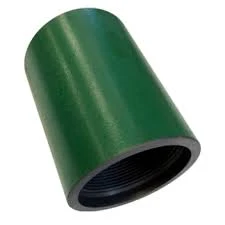- Afrikaans
- Albanian
- Amharic
- Arabic
- Armenian
- Azerbaijani
- Basque
- Belarusian
- Bengali
- Bosnian
- Bulgarian
- Catalan
- Cebuano
- Corsican
- Croatian
- Czech
- Danish
- Dutch
- English
- Esperanto
- Estonian
- Finnish
- French
- Frisian
- Galician
- Georgian
- German
- Greek
- Gujarati
- Haitian Creole
- hausa
- hawaiian
- Hebrew
- Hindi
- Miao
- Hungarian
- Icelandic
- igbo
- Indonesian
- irish
- Italian
- Japanese
- Javanese
- Kannada
- kazakh
- Khmer
- Rwandese
- Korean
- Kurdish
- Kyrgyz
- Lao
- Latin
- Latvian
- Lithuanian
- Luxembourgish
- Macedonian
- Malgashi
- Malay
- Malayalam
- Maltese
- Maori
- Marathi
- Mongolian
- Myanmar
- Nepali
- Norwegian
- Norwegian
- Occitan
- Pashto
- Persian
- Polish
- Portuguese
- Punjabi
- Romanian
- Russian
- Samoan
- Scottish Gaelic
- Serbian
- Sesotho
- Shona
- Sindhi
- Sinhala
- Slovak
- Slovenian
- Somali
- Spanish
- Sundanese
- Swahili
- Swedish
- Tagalog
- Tajik
- Tamil
- Tatar
- Telugu
- Thai
- Turkish
- Turkmen
- Ukrainian
- Urdu
- Uighur
- Uzbek
- Vietnamese
- Welsh
- Bantu
- Yiddish
- Yoruba
- Zulu
irrigation pipe coupling
Understanding Irrigation Pipe Couplings Essential Components for Efficient Water Management
Irrigation plays a critical role in agriculture, especially in regions where water scarcity is a concern. One essential component of any irrigation system is the pipe coupling, which serves as a vital link between different sections of irrigation pipes. This article delves into the importance, types, and installation of irrigation pipe couplings, shedding light on their role in efficient water management.
Importance of Pipe Couplings in Irrigation Systems
Pipe couplings are designed to connect two lengths of pipe, enabling seamless water flow throughout an irrigation system. They ensure that water is distributed evenly across agricultural fields, optimizing the use of water resources. Without proper couplings, the risk of leaks and system inefficiencies increases, leading to wasted water and potential damage to crops.
Moreover, effective pipe couplings contribute to reducing pressure loss along the system, promoting better water delivery and minimizing energy costs associated with pumping. By maintaining a well-functioning irrigation system, farmers can achieve higher yields, conserve water, and ultimately enhance their productivity.
Types of Irrigation Pipe Couplings
There are several types of pipe couplings available, each suited for different materials and applications within irrigation systems
1. PVC Couplings Widely used in irrigation due to their resistance to corrosion and low cost, PVC (polyvinyl chloride) couplings are ideal for various water distribution systems. They are lightweight and easy to install, making them a popular choice among farmers.
2. Metal Couplings These couplings, often made from stainless steel or brass, are highly durable and suitable for high-pressure applications. Metal couplings provide excellent strength and longevity but may be more expensive than plastic options.
irrigation pipe coupling

3. Flexible Couplings Designed to accommodate slight misalignments in pipe systems, flexible couplings allow for easy adjustment and are particularly useful in uneven terrain. They are available in various materials, providing versatility for a range of irrigation setups.
4. Compression Couplings These are designed to securely join two pipes by compressing a rubber ring against the pipe when tightened. Compression couplings are advantageous due to their ease of use and ability to form a watertight seal.
Installation of Pipe Couplings
Installing pipe couplings is a straightforward process, but it is essential to follow these steps to ensure optimal performance
1. Clean the Pipe Ends Before installation, clean the ends of the pipes to remove any dirt or debris that may compromise the seal.
2. Align the Pipes Ensure that the pipes are properly aligned before inserting the coupling. Misalignment can lead to leaks.
3. Secure the Coupling Depending on the type of coupling, tighten the fittings appropriately. For PVC couplings, use solvent cement; for metal couplings, use wrenches to secure bolts.
4. Test for Leaks After installation, turn on the water supply and check for any leaks. Address any issues immediately to prevent water loss.
In conclusion, irrigation pipe couplings are crucial elements that facilitate efficient water management in agricultural practices. By choosing the right type of coupling and ensuring proper installation, farmers can significantly enhance the performance of their irrigation systems, leading to a more sustainable and productive agricultural sector.
-
Tubing Pup Joints: Essential Components for Oil and Gas OperationsNewsJul.10,2025
-
Pup Joints: Essential Components for Reliable Drilling OperationsNewsJul.10,2025
-
Pipe Couplings: Connecting Your World EfficientlyNewsJul.10,2025
-
Mastering Oilfield Operations with Quality Tubing and CasingNewsJul.10,2025
-
High-Quality Casing Couplings for Every NeedNewsJul.10,2025
-
Boost Your Drilling Efficiency with Premium Crossover Tools & Seating NipplesNewsJul.10,2025







